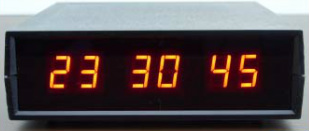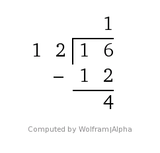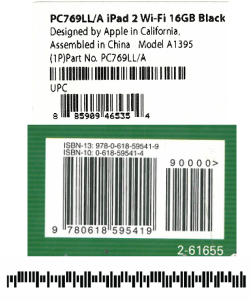
Allow me to dwell on the 24-hour time format a bit longer, with a military focus. Here are some phrases commonly heard (or slightly paraphrased) in movies associated with the military:
"Reveille is at 0500." Fine. I understand that. They blow the bugle at 5 a.m.
"Lunch at 1200." Gotcha, I know that means at noon. Just tell me where.

My mind thinks "How many hours past 1200 is that?" Therein lies an example of the importance of remainders.

Whether students/soldiers/civilians/passersby realize or not, they have lunged headlong into a key concept in number theory: modular arithmetic.
I created (what I felt at the time was) a good introductory worksheet on modular arithmetic, using students' complaints about "always having the same thing for lunch" and made up a rotating set of dishes served in a neighboring school's cafeteria. A scan of the original, older version of it and the answer key is available HERE, if interested.
Symbolically, this tells us that 16 == 4(mod 12), or that when divided by 12, the numbers 16 and 4 have the same remainder. By similar measure, I could quickly determine that a football coach saying "kickoff is at 1900" is not just due to the fact he is a social studies teacher and currently talking about the 1900's in U.S. History class. Since 19 == 7(mod 12), he is referring to 7:00 p.m. for kickoff time.
But remainders go beyond just telling time. Suppose today is the 5th and I need to know what day of the week the 19th falls on? You may not use the word "remainder" but somewhere in your logic, the concept does rear its head at you. Admit it.

- You are in line at the store and an item's bar code does not scan, so the clerk enters the UPC manually, only to receive an "Invalid UPC" prompt on their register.
- You need to order a textbook for a graduate course, but find the book title, subtitle, edition, author(s), publisher, and publish date to be an exhaustive list of information to compile to verify you order the appropriate book.
- You are baffled by the small series of tick marks that appear on junk mail you receive, but have a hunch it helps automatic sorters at the Post Office begrudgingly deliver those items in a quick, efficient manner without having to read your misspelled name and incorrect address or, my favorite, "Or Current Resident" on the name line.
These are all valid applications of UPCs, ISBNs, and IMBs; and no, that's not a competition for more acronyms than you'll hear in a staff meeting about NCLB, CCSS, or SBG.
I tend to focus here on UPCs and ISBNs, because they are the most readily available examples I use in class when a student brings up this topic. Not once have I been interrupted with a "Do we need to know this for the test?" I like to think it is because students are engaged in the topic, since it is applicable to a plethora of things around them.
 RSS Feed
RSS Feed